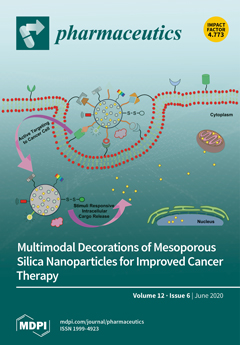Cyclic methylsiloxanes D4, D5, D6 (also called cyclic silicones) are widely used in various dermatological products and cosmetics, both for children and adults. As a result of their unique physicochemical properties, the production of cyclic methylsiloxanes has greatly increased over the last few years, which has resulted in increased exposure to mankind. The validated quantitative for gas chromatography-flame ionization detector (GC-FID) analysis with using the transdermal diffusion system with vertical Franz cells demonstrated that ex vivo human skin is not a barrier to cyclic siloxanes. D4, D5, and D6 have a specific affinity to stratum corneum (SC) (especially D6), and can even diffuse into the deeper layers of the skin (epidermis (E) and dermis (D)), or into the receptor fluid as well. An important achievement of this work was the observation of the characteristic ratio partitioning D4, D5, and D6 in skin layers and receptor fluid (RF). The studies have shown that, in order to thoroughly understand the mechanism, it is important to determine not only the differences in the amounts of cumulated doses in total in all skin layers and receptor fluid, but also the mutual ratios of analyte concentrations existing between matrices. For example, in the case of the stratum corneum, the cumulative doses of D4, D5, and D6 were 27.5, 63.9, and 67.2 µg/cm
2/24 h, respectively, and in the epidermis, they were 6.9, 29.9, and 10.7 µg/cm
2/24 h, respectively, which confirmed the highest affinity of D6 to stratum corneum as the amount diffused into the epidermis was 2.8 times smaller compared to D5. The calculated epidermis-to-stratum corneum ratios of analyte concentrations also confirm this. The largest ratio was identified for D5 (E/SC = 47), followed by D4 (E/SC = 25), and finally by D6 (E/SC = 16). The analysis of the next stage of diffusion from epidermis to dermis revealed that in dermis the highest cumulative dose was observed for D5 (13.9 µg/cm
2/24 h), while the doses of D4 and D6 were similar (5.1 and 5.3 µg/cm
2/24 h). Considering the concentration gradient, it can be concluded that the diffusion of D5 and D6 occurs at a similar level, while D4 diffuses at a much higher level. These observations were also confirmed by the dermis-to-epidermis concentration ratios. The final stage of diffusion from dermis to the receptor fluid indicated that D4 was able to permeate easily, while D5 exhibited a difficult diffusion and the diffusion of D6 was limited. The receptor fluid-to-dermis concentration ratios (RF/D) were calculated for D4, D5, and D6: 80, 53, and 17, respectively. Our results also revealed the increased risk of D4 and D5 absorption into the blood and lymphatic systems, whereas D6 demonstrated the lowest risk. Therefore, we can argue that, among the three tested compounds, D6 is the safest one that can be used in dermatological, cosmetic, and personal care products. This study demonstrates that the stratum corneum, epidermis, and dermis can be also considered reservoirs of cyclic methylsiloxanes. Therefore, these compounds can demonstrate potential long-term bioaccumulation, and can be absorbed to the bloodstream in a long-term and uncontrolled process.
Full article






